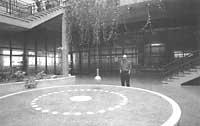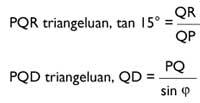Method of information of noon
2001/06/01 Ares, Felix Iturria: Elhuyar aldizkaria
Half of the tour arrives at 12:00 noon, when the Sun is exactly south.
If we could know exactly when the Sun is in the South, we would also know when it is 12:00. Sure, however, at 12:00 according to the Sun, time that does not correspond to what our watches say. The watches indicate the official time.
In summer, when our watches indicate that they are 2 in the afternoon, approximately 12 in the Sun. The difference is two hours. In winter, the difference is only one hour.

In the experiment we will explain the method to know exactly when the midday of the sun is, taking into account that that time does not coincide with the official time. It is the time when the Sun is at the highest point of its trajectory.
The method is simple, we only need a compass and a box, as you can see in the image.
Place the compass on the box in north-south orientation. To do this, it must be taken into account that the compass needle and the side edges of the box must be parallel.
When the box is well oriented: Before 12:00 the Sun will sunny part of the east facing box. Once past 12:00 the western part will be illuminated. At 12:00 at the point, the Sun is just south. A moment earlier it will illuminate the eastern part and a moment later the western one.
The 12:00 noon will be held at the time of your transfer.
Try to perform the experiment and accurately point the time of the Sun at 12:00h where you live.
If you were exactly on the Greenwich meridian, you would point them at 14:00. As you are not in it, you will see that there is a difference depending on the geographical length of the place.
We hope to perform the experiment and enjoy it.

Gai honi buruzko eduki gehiago
Elhuyarrek garatutako teknologia





